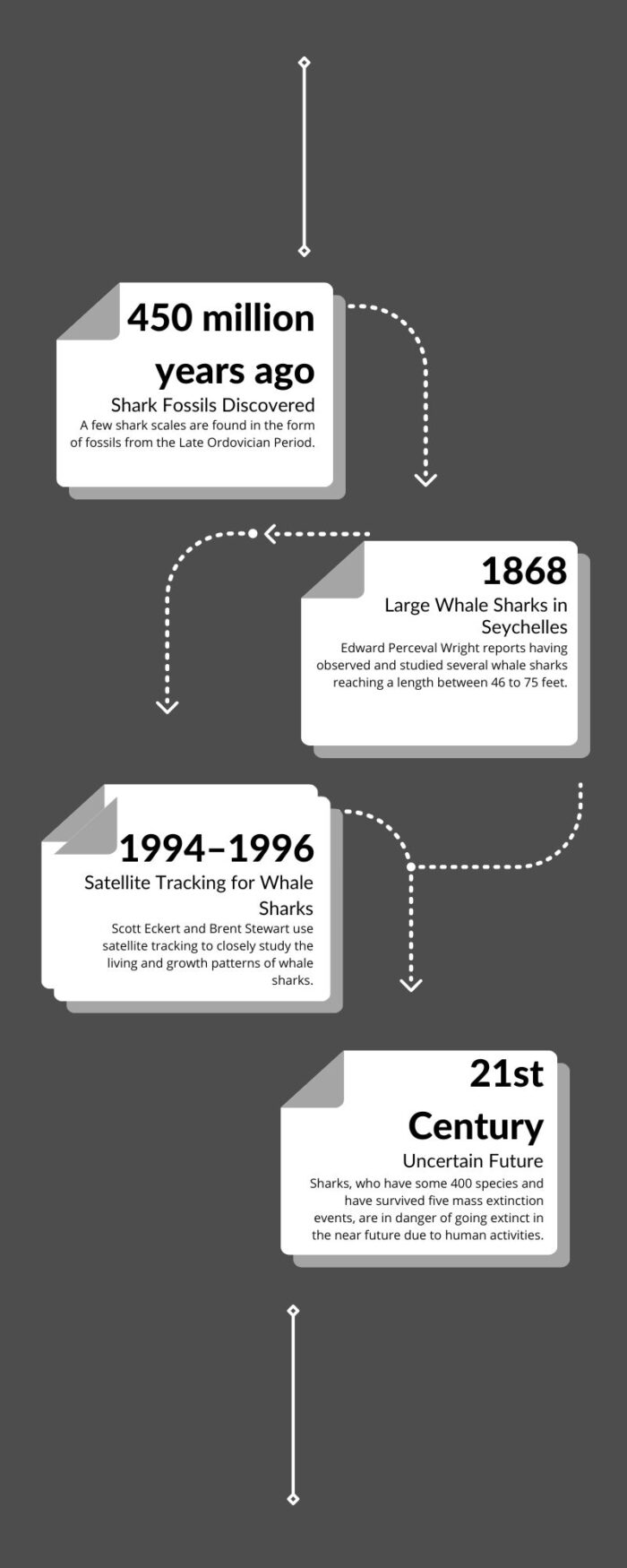International Whale Shark Day
Celebrated on August 30, International Whale Shark Day honors the incredible whale shark. These massive creatures are the largest shark species, growing up to 60 feet long. Known for their slow and gentle nature, whale sharks often swim in shallow waters but can also be found at depths of up to 3,000 feet. Unfortunately, their size and behavior make them easy targets for fishing, and they are hunted for their meat and fins. This has led to a drastic 50% decline in their population, putting them on the endangered species list. The shrinking number of whale sharks is also a warning sign for the marine environment, as it could lead to an overpopulation of plankton, one of their main food sources.
History of International Whale Shark Day
International Whale Shark Day was first celebrated in 2008 during the International Whale Shark Conference in Isla Holbox. This event brought together 40 ocean experts, activists, and scientists who were concerned about the declining whale shark population. Although these gentle giants have existed for over 240 to 260 million years, they were only discovered in the 1820s off the coast of South Africa by Dr. Andrew Smith, who recognized them as the largest shark species on Earth.
Despite their enormous size, reaching up to 60 feet long and weighing around 12 tons, whale sharks are known for their calm nature. At birth, they are just 16 to 24 inches long but can grow to their full size by the age of 25. With 300 rows of 3,000 tiny teeth, these filter-feeders consume plankton, squid, and fish, eating up to 44 pounds of food daily. Their skin is adorned with unique patterns of dots and lines, making each one easily identifiable.
Whale sharks have been around since the Jurassic and Cretaceous periods, yet before the 1980s, fewer than 350 sightings had been recorded. Every spring, they migrate to the warm waters of Australia’s Ningaloo Reef, where they find plenty of plankton to eat. Sadly, despite their long history, whale sharks are now on the endangered species list due to hunting for their meat, fins, and even for sport. In places like the Philippines, the whale shark trade continues, threatening their survival.
If we don’t protect these magnificent creatures, the impact on our oceans could be severe. An overpopulation of plankton could lead to harmful algal blooms, negatively affecting other fish species, the environment, and even humans. Saving the whale sharks is not just about preserving a species; it’s about maintaining the health of our oceans.
International Whale Shark Day timeline

International Whale Shark Day FAQs
Why Do We Celebrate International Whale Shark Day?
We celebrate International Whale Shark Day to raise awareness about these endangered fish and highlight their crucial role in the marine environment.
Are Whale Sharks Endangered in 2021?
Yes, in 2021, the International Union for Conservation of Nature (IUCN) listed whale sharks as an endangered species.
Is There a World Shark Day?
Yes, Shark Awareness Day is celebrated every year on July 14.
How To Observe International Whale Shark Day
1. Reduce Plastic Usage
Plastic pollution is one of the biggest threats to whale sharks and other marine life. If a whale shark swallows plastic and it reaches its intestines, it can make the shark sick and eventually cause its death by preventing it from eating. To help protect whale sharks, reduce or eliminate your use of plastic.
2. Learn About Whale Sharks
Whale sharks are fascinating creatures. Unlike their smaller, more aggressive shark relatives, whale sharks are slow, gentle, and unique in their behavior. These peaceful giants have even been known to carry humans on their backs for a ride.
3. Have a Whale Shark Day
Celebrate by buying whale shark-themed merchandise, enjoying whale shark-themed food and drinks, and changing your social media profile pictures to a whale shark image. These fun activities help raise awareness about this endangered species.
5 Facts About Whale Sharks That Will Blow Your Mind
Not Relatives of Whales
Despite their name, whale sharks aren’t related to whales. They’re called whale sharks simply because of their enormous size.
Feeding Is Difficult
Whale sharks don’t have sharp or long teeth, so they can only swallow their food, such as shrimp, fish, and plankton, whole.
Extremely Long Lives
Whale sharks can live up to 150 years, but sadly, more than 90% of them are killed before reaching that age.
Slow Swimmers
Whale sharks are slow swimmers, with a top speed of only 3.1 miles per hour.
Don’t Stay with Their Young
Unlike whales, whale sharks do not stay with their young after giving birth.
Why We Love International Whale Shark Day
A. A Celebration of Whale Sharks
Whale sharks are among the gentlest creatures in the ocean. Their calm swimming and feeding habits, along with their beautiful patterns, make them the true “gentle giants” of the sea. They are one shark species we’d love to swim alongside.
B. A Celebration of Long History
Our planet has seen many extinction events and the rise and evolution of countless species. Whale sharks are a remarkable part of this history. Studying their evolution helps us understand more about Earth’s past.
C. A Celebration of Ecosystems
Whale sharks play an important role in maintaining the balance of ocean ecosystems. Without them, plankton populations could explode, leading to harmful algal blooms. These blooms can damage marine life and affect humans as well. By celebrating whale sharks, we recognize their vital contribution to a healthy ocean environment.
International Whale Shark Day dates
| Year | Date | Day |
|---|---|---|
| 2025 | August 30 | Saturday |
| 2026 | August 30 | Sunday |
| 2027 | August 30 | Monday |
| 2028 | August 30 | Wednesday |
| 2029 | August 30 | Thursday |
Also Read:
International Day against Nuclear Tests
Women’s Equality Day
Health Unit Coordinators Day
































































